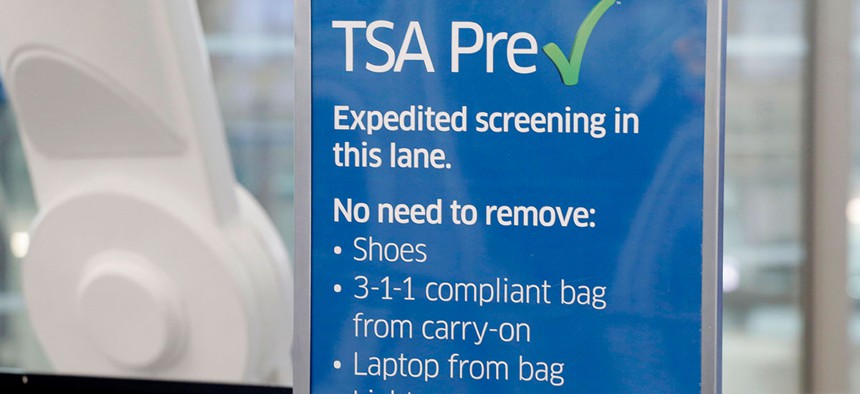
The TSA’s PreCheck program is under fire. Mark Lennihan/AP
The TSA is Under Fire Again For its Poor Security Screening
The agency is, once again, under fire from Congress.
The US Transportation Security Administration came under renewed fire yesterday (Nov. 3) from Congress, for its inability to detect weapons and other contraband during security screenings.
One congressman, Utah’s Jason Chaffetz, took issue with the TSA’s PreCheck initiative, which allows pre-screened travelers to go through an expedited security process, such as leaving laptops in their carry-on luggage. At one point in the hearing, TSA head Peter Neffenger told Chaffetz that a PreCheck passenger caught carrying a loaded weapon loses PreCheck privileges for 90 days.
“So you try to bring a gun on a plane, whether it’s an accident or not, and just for 90 days you just don’t get PreChecked?” asked Chaffetz. “That’s the penalty?”
Neffenger had been called to testify about “universal and disappointing” gaps found in the TSA screening process by two federal watchdog groups, the Government Accountability Office and the Office of the Inspector General, which is part of the US Department of Homeland Security. He took over the agency in June, after reports that TSA agents missed 95% of weapons in tests by undercover Homeland Security officials.
“The failures included failures in the technology, failures in TSA procedures, and human error. We found layers of security simply missing,” inspector general John Roth told the committee (pdf).
“In looking at the number of times people got through with guns or bombs in these covert testing exercises, it was really pathetic,” said Rep. Stephen Lynch of Massachusetts. “When I say that, I mean pathetic,” he said. “Just thinking about the breaches there, it’s horrific.”
Neffenger maintained that he is committed to reforming the agency with more training, and mentioned bringing in canine units to compensate for human error. But ultimately, he said, “There is no fixing it. There is addressing the challenges, learning from what you’ve addressed, testing yourself, learning from those tests and continuous improvement as you go forward.”






